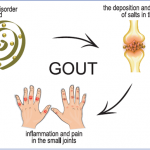“Translational research” has become the new buzzword in science. Increasingly, an important goal of research is a “bench-to-bedside” approach that rapidly progresses from fundamental laboratory studies to patient treatment. Translational science is gaining increasing prominence within the National Institutes of Health (NIH) as well. Since 2006, the NIH has funded translational research centers throughout the United States–the Clinical and Translational Science Awards (CTSA) program–and the scientific work done through these centers may soon assume new importance.
NIH Spotlight on Translational Research Grows
As part of a planned reorganization, the National Center for Research Resources—where the CTSA as well as well as other research programs are now housed—will be disbanded and a new center dedicated to translational research will be formed. Proposed by NIH Director Francis Collins, MD, PhD, the new National Center for Advancing Translational Sciences (NCATS) will be aimed at strengthening translational research within the United States. As part of that effort, partnerships will be forged between investors, academia, government, and the pharmaceutical industry to speed the development of urgently needed diagnostics and treatments, according to the proposed 2012 NIH budget. If passed by Congress, the CTSA program might fall under the NCATS Center by late 2011, according to Anthony Hayward, MD, PhD, director of the Division of Clinical Research Resources in the NCRR.
No one knows entirely what the reorganization might mean for CTSA, but it is likely to be a significant contributor to the success of NCATS and its translational science—a key goal for Dr. Collins, says Dr. Hayward. There are now 60 research centers funded by the CTSA throughout the United States, and after the reorganization, there will likely be monies available for funding more programs at additional translational institutes, Dr. Hayward notes.
In brief, the CTSA program was formed to enable innovative and collaborative scientific approaches—particularly translational research—that addressed complex health challenges. These challenges include, in the field of rheumatology, difficult-to-treat conditions, those that require complex therapies, and identification of biomarkers that might help predict disease onset and severity of conditions such as rheumatoid arthritis (RA). The program supports a national consortium of medical research centers that provide a framework for funding translational research. The centers also train new clinical and translational researchers in medical fields ranging from cardiology to oncology to ophthalmology.
“The CTSA program has been a bold new experiment, but one that was meant to evolve as circumstances change,” Dr. Hayward says. “The CTSA program is very much a moving target,” he notes, adding that the planned reorganization is likely to add new weight to the goal of advancing translational research while reducing inefficiencies within the NIH.
CTSA 101
“The CTSA PIs [principal investigators] are watching the reorganization changes within the NIH with great interest,” says Gary S. Firestein, MD, professor of medicine and dean and associate vice chancellor of translational medicine at the University of California San Diego. Dr. Firestein is a rheumatologist, researcher, and the CTSA principal investigator at the University of California San Diego Clinical and Translational Research Institute, one of the 60 CTSA-funded medical institutions in the United States.

